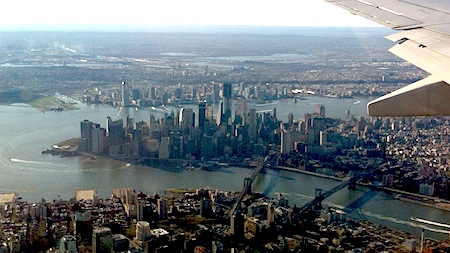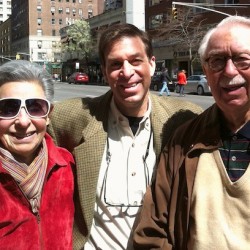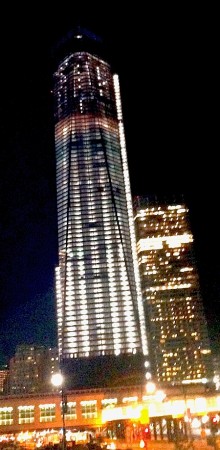
New Yorkers, if you want to know, think pretty highly about their city these days. And why not? From Battery Park, at the foot of Manhattan, to the far reaches of Queens, the Bronx, Brooklyn, and Staten Island new residents are arriving at the rate of 5,000 people a month. New jobs are being generated at the same clip. Unemployment is going down, as is violent crime, which has dropped nearly 80 percent in the last two decades, according to the Police Commissioner’s office.
Meanwhile the subways are clean and on-time. Central Park is beautiful. Incomes are going up along with the 104-story, 1,776-foot One World Trade Center. Seen from the air on a cloudless blue sky day this month, the rising tower is simultaneously a reminder of New York’s darkest day and an illustration of engineering and cultural moxie fitting a city that once more is laying claim to being the greatest in the world.

The idea that New York merits more attention than other U.S. cities involves more than its size — now 8.2 million residents and growing — its magnificent skyline, or its streets crowded during the daylight hours and a good many of the evening hours, too. It has to do with what it takes to lead a life of value in a place that can be tough and tender, self-absorbed and confrontational, but always interested in what’s next. That intense willingness to know more, to be ahead, to set trends, to thrive, to be relevant, saturates New York’s landscape, setting up what The New Yorker writer John Lahr called “a struggle against the omnipresent tug of the ideal.”
New York is no stranger to me. I was born and raised in White Plains, a close-in suburb, and have been in and out of the city all my life. I was there when it was dirty and dangerous in the 1970s and mid-1980s, when companies fled, the population fell, when visitors were murdered on subway platforms, when the Yankees and the Mets and the Knicks went on long bouts of mediocrity bordering on terrible.
New York is not that city, and hasn’t been for years. It’s distinction as a great place with a very bright future in the 21st century has become ever more apparent during recent visits, like the one I just made. That recognition is largely the result of comparing a place that is aggressively reckoning with the new market trends of the 21st century with one that is having such trouble leaving the 20th.

- I live in Michigan, the state where Rick Santorum, the Republican presidential candidate who today dropped out of the race, campaigned on a message that advised voters that a college education was a waste because learning was for snobs.
More is spent to house prisoners in Michigan than to educate students. Michigan’s public transportation system is such a disgrace that it is a long, long bus ride from any northern state city to any southern state city. And the largest metropolitan region has Amtrak service, but a lousy bus system and no commuter rail network. Michigan’s limited vision of what is possible, both in deficit-strained state government and in frustrated and fearful communities, including my own here in northern Michigan, has formed the double helix of a new cultural DNA – do nothing anywhere.
New York, of course, has plenty of its own problems. But a deficit of inventiveness is not one of them. On Friday evening I had dinner at a Chinatown restaurant that put strangers at the same table. Ours included a young law school student, a young software engineer, and two writers for The Verge, an online site that reviews gadgets and technology. None of these people were native New Yorkers. All had come, as had generations before them, to immerse themselves in the hard work of creating their futures, testing themselves, discovering how nimble they really were navigating the smartphone, text message, digitized connections of a new century.
The restaurants and bars of Manhattan are jammed with the energy and optimism — and the strong drinking habits –Â of young people. They’re a generation that wants to do well and do good in a world that constantly challenges them to weigh the efficient and practical implications of how they communicate with how personally distant and protective their culture can be. New York is a scene as a result, a talent pool rich with heaps of self-conscious awareness and civic irony. When the history of the 21st century is written, the networked and ambitious young vibe of New York in this era will be remembered for its capacity for producing a good number of the operating principles that guided successful lives and healthy places. Be vigilant. Don’t fear. Stay in touch. Have fun.
I’m soooooo jealous.
— Keith Schneider
Great article! I always loved those big tables in Chinatown too, where one can meet all sorts of folks. Glad you had a great time! And glad you have observed that the city is looking better, feeling better, doing better.
probably the best way to encourage visitors and new residents to any cramped crowded city is a clean safe and reliable mass transit system. just like the field of dreams if you build it they will come.
mass public transit is the key to Americas future its time we realize it and start building it